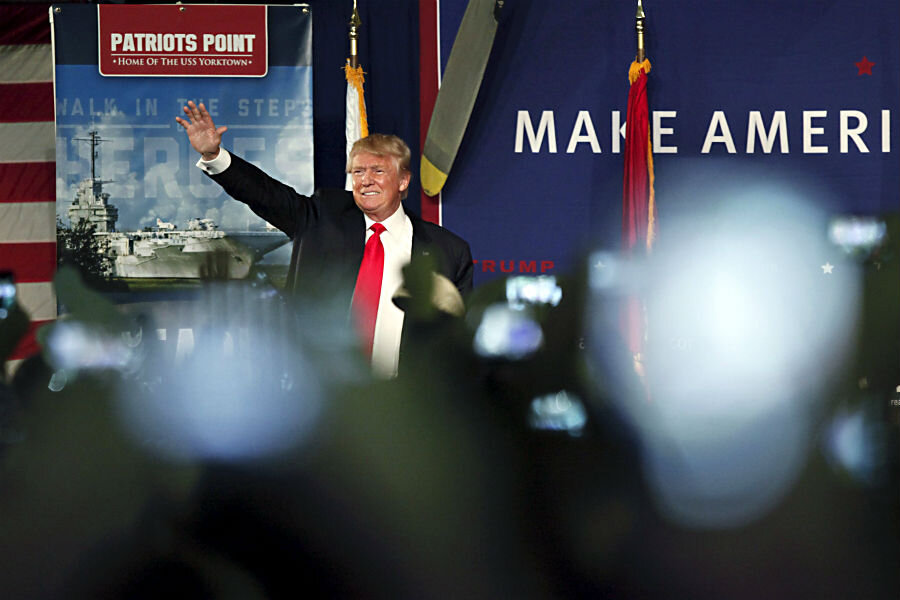How, this time, Trump may actually have gone too far
Loading...
Donald Trump appears to have finally gone too far – not for his supporters, but for shocked members of the US media and political establishment. Some of them have responded to Mr. Trump’s proposal to ban non-citizen Muslims from entering the United States with a level of criticism unheard in American politics since the days of populist demagogues George Wallace and Huey Long – and perhaps not even then.
Jeb Bush called Trump "unhinged." Lindsey Graham said he was "downright dangerous." Hillary Clinton tweeted out "Love trumps hate."
Such tough words might be expected from political rivals. But Dick Cheney isn’t running for president in 2016, and he said that Trump’s proposal “goes against everything we stand for and believe in.”
Journalists, who have struggled with how to handle Trump’s outrageous and at times demonstrably false statements, went further in some instances. The New York Daily News ran a cover illustration of Trump beheading the Statue of Liberty. Former NBC anchor Tom Brokaw broadcast a scathing commentary concluding in Arlington Cemetery, saying Trump’s Muslim ban is “a dangerous proposal the overrides history, the law, and the foundation of America itself.”
At BuzzFeed on Tuesday editor-in-chief Ben Smith issued new guidelines for employees about how to discuss Trump on social media.
“It is, for instance, entirely fair to call him a mendacious racist,” wrote Mr. Smith.
Wow. Will this outpouring of vitriol affect Trump’s political standing in any way?
Well, it’s unlikely to quickly erode his poll numbers. For one thing, condemnation for his proposal is not universal among top Republicans. Sen. Ted Cruz (R) of Texas commended Trump for “focusing America’s attention on the need to secure our borders.” For another, Trump voters are predisposed to back a Muslim entry ban. Republicans who think Muslims pose an immediate threat to the US are much more likely to support Trump than are less concerned members of the GOP.
The more interesting and fateful question is whether the blowback on the proposed entry ban helps cap Trump’s share of the GOP electorate at its current 20 to 30 percent range. That would likely lead to a fairly quick exit from the race once actual voting starts in February.
That limitation is entirely possible.
As we wrote yesterday, Trump so far is playing the media like a piano. With his outrageous statements, he’s perfected the ability to draw attention to himself, particularly after a bad poll or two.
And to this point tone hasn’t mattered. Good or bad, attention is all Trump needs. It has kept him in the public eye at a time when Americans really aren’t paying much attention to politics.
But that won’t last forever. It may not even last through January. Trump’s problem is that he needs to continually up his ante to dominate Republican news coverage. You can see that in his proposals, which have become progressively more outré. First it was a wall along the southern border. Now it’s a blockade aimed at an entire religion.
Each step up the escalation ladder makes his supporters love him all the more. But it risks driving away uncertain voters and solidifying the opposition of anti-Trump Republicans.
“It’s a perfect strategy to produce early polling leads. When it comes to winning nominations, however, it’s a loser,” writes political scientist Jonathan Bernstein at Bloomberg View.
Once voting starts losing candidates will drop out. The non-Trump vote will coalesce around others. If Trump’s 30 percent is indeed a ceiling, at some point a rival – Cruz? Marco Rubio? – will forge ahead to victory.
Unless that’s not how it works. We’ll end with the obligatory Trump caveat: We’ve been wrong about his political fortunes before, and to this point his campaign has progressed like no other in the modern era.






